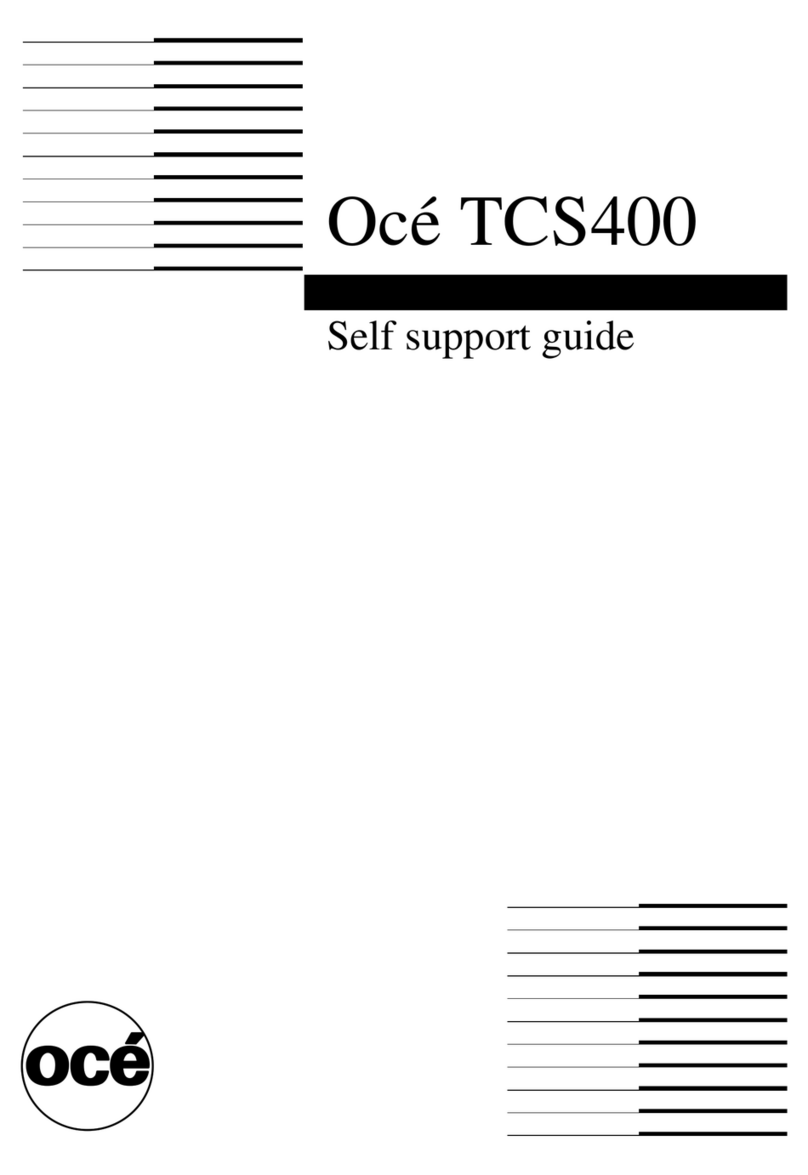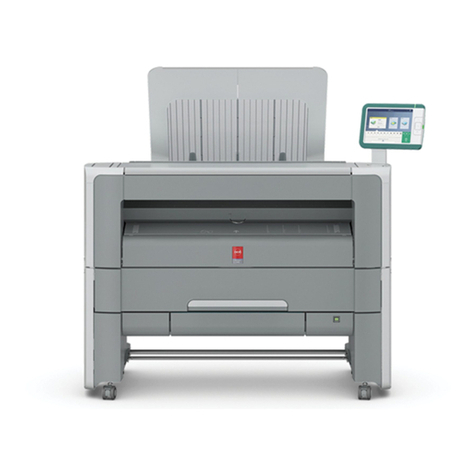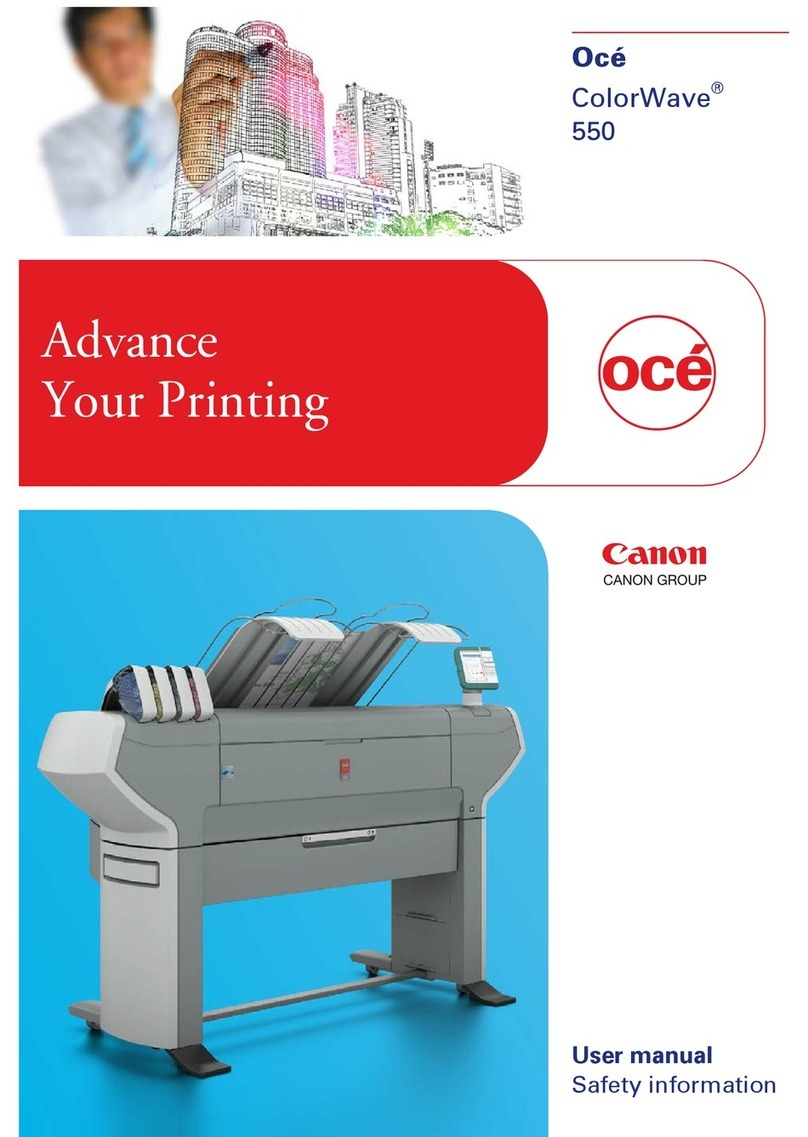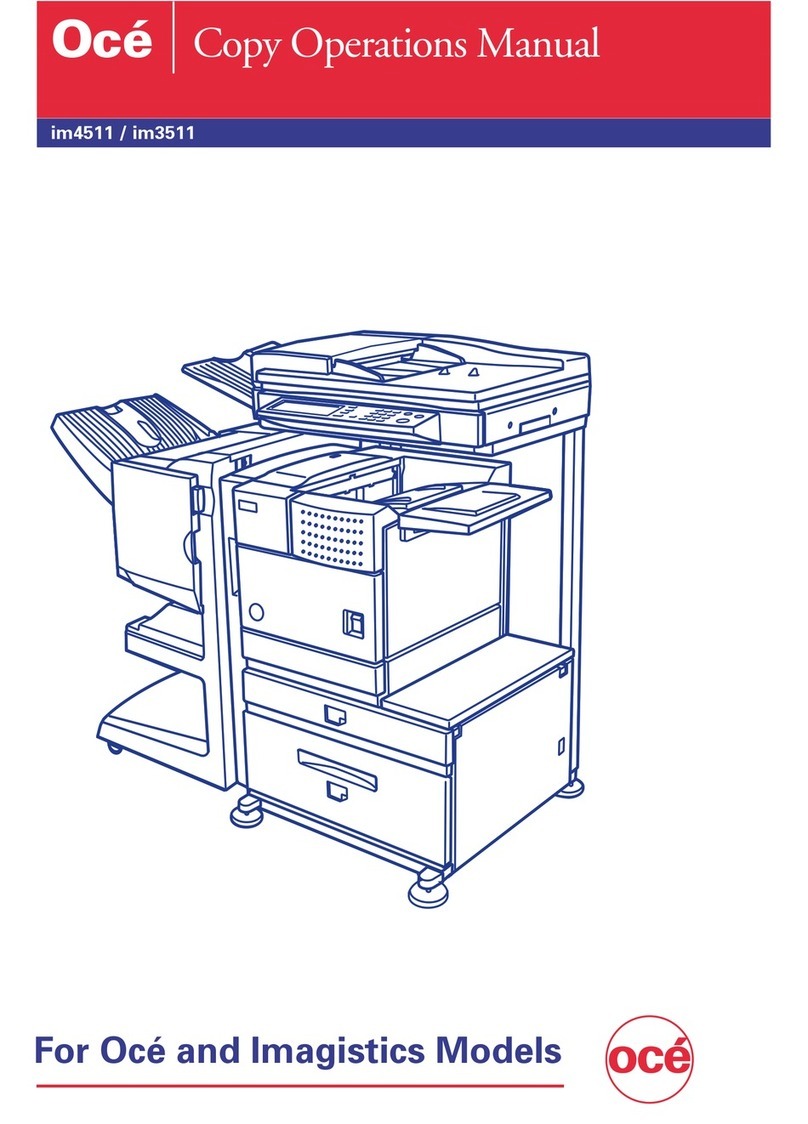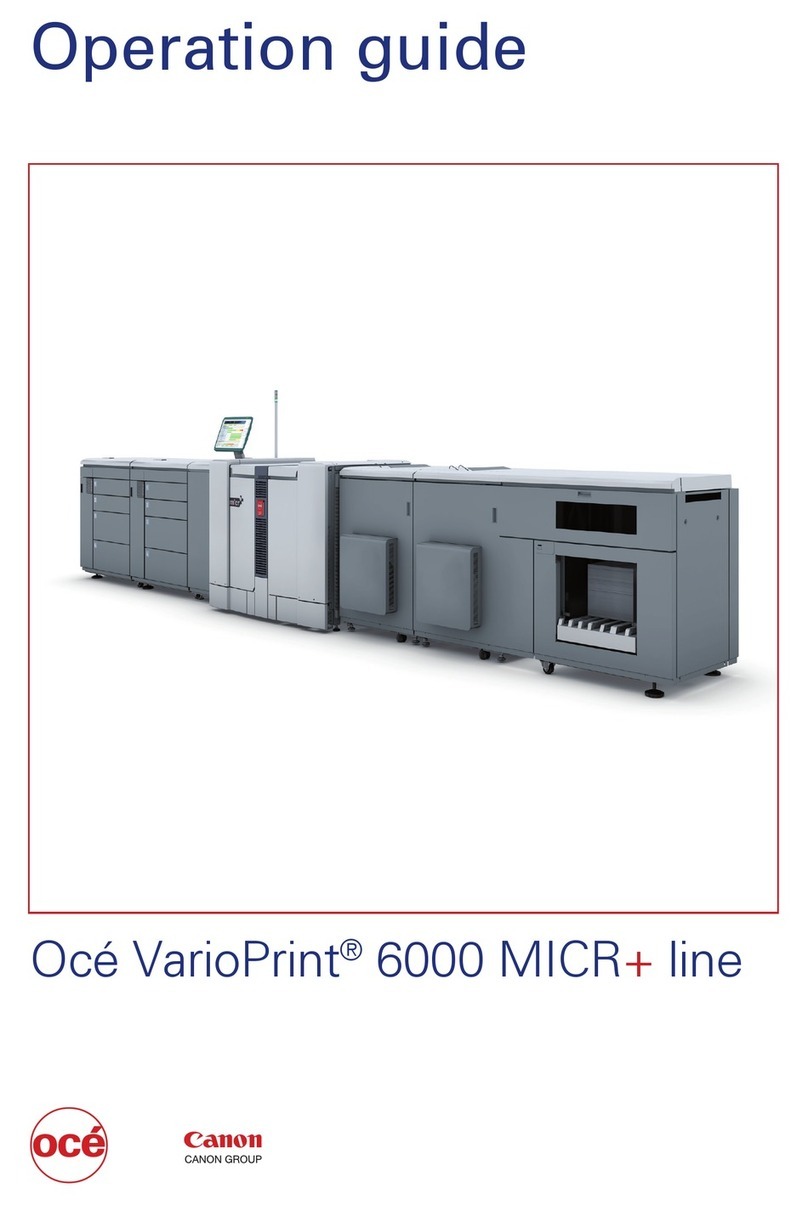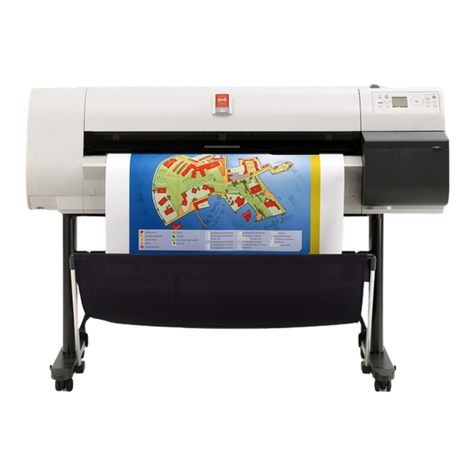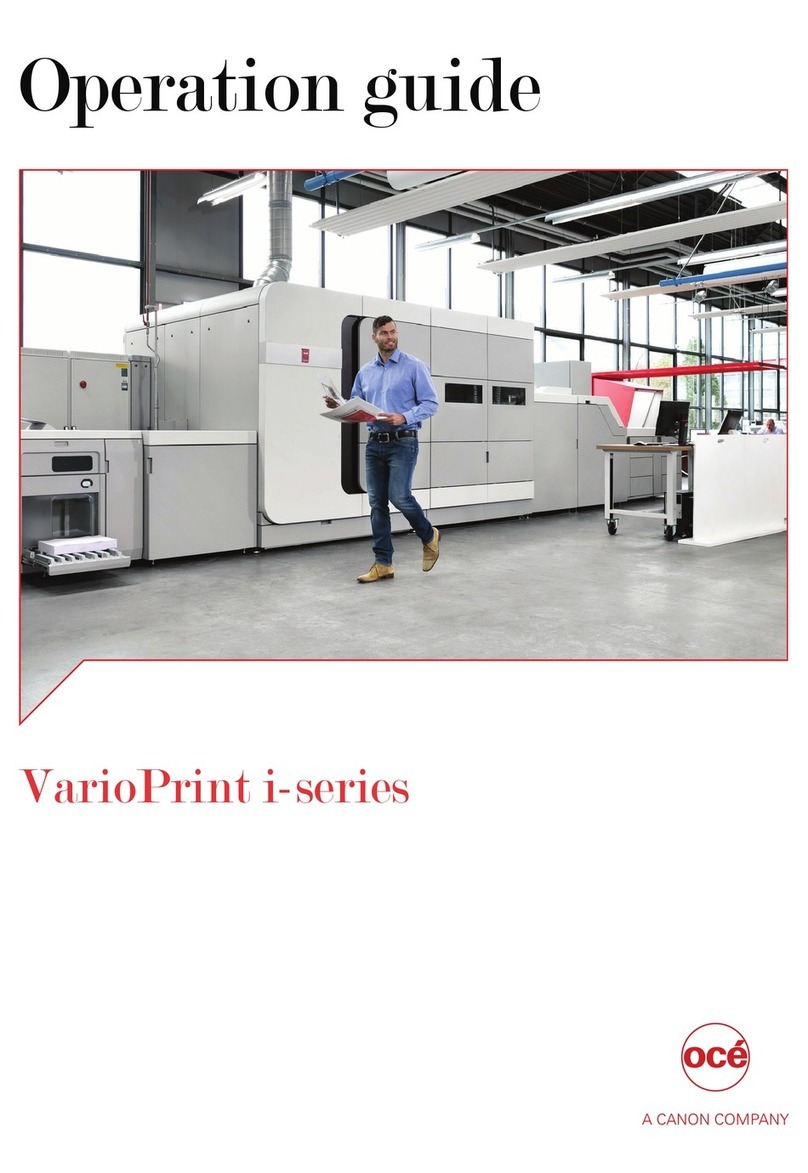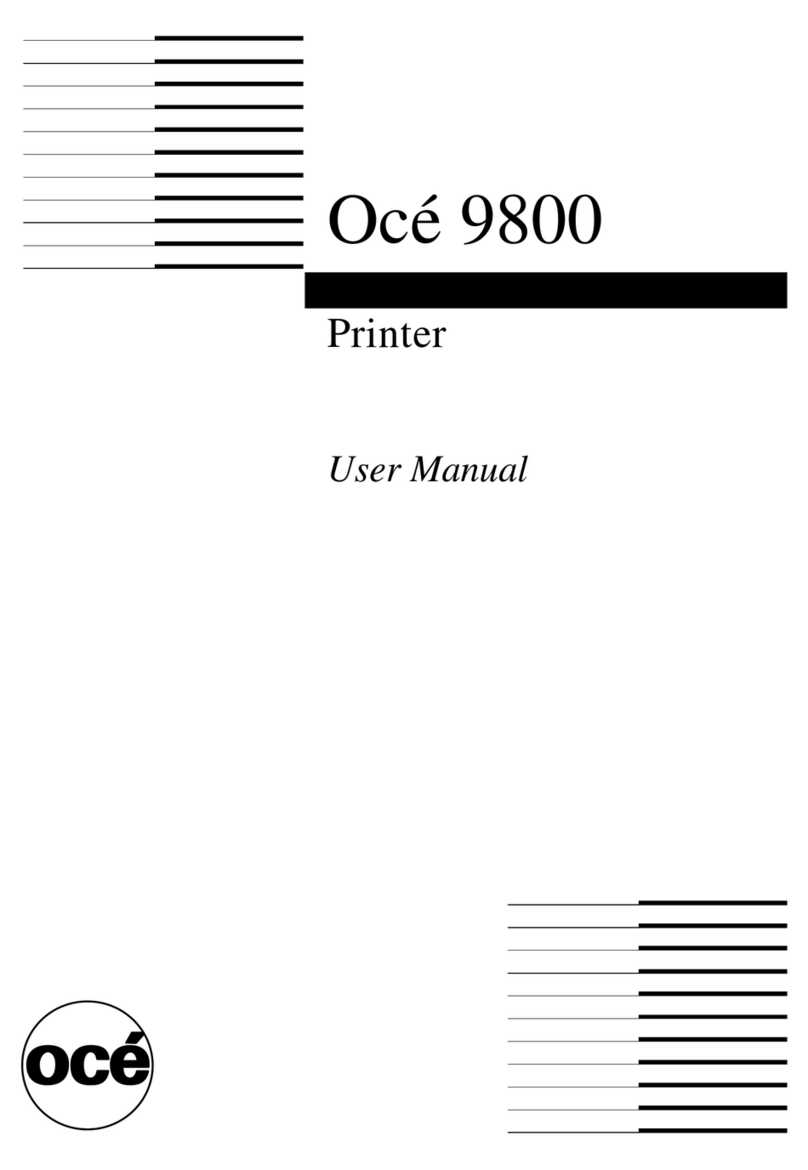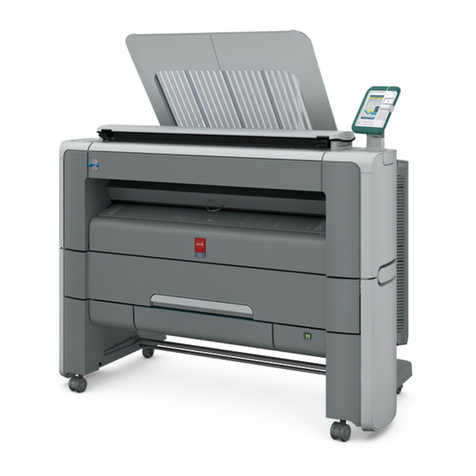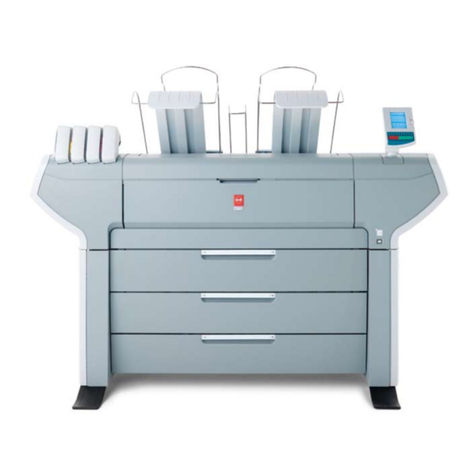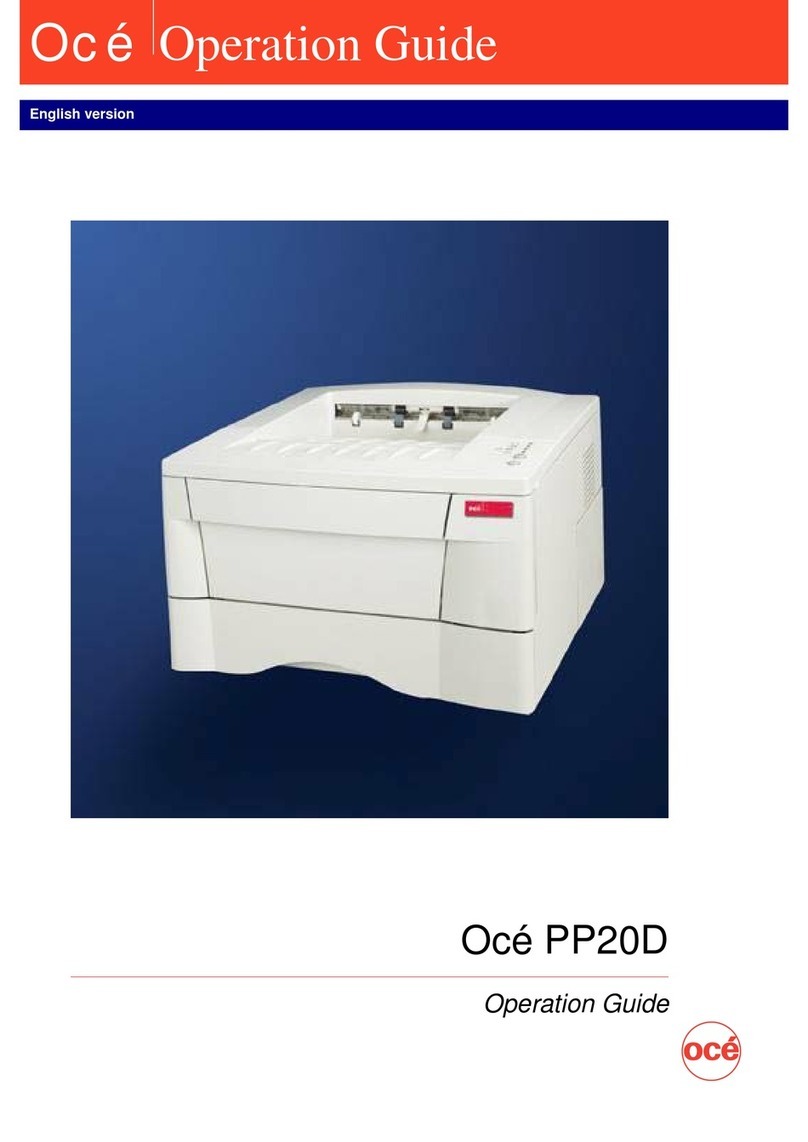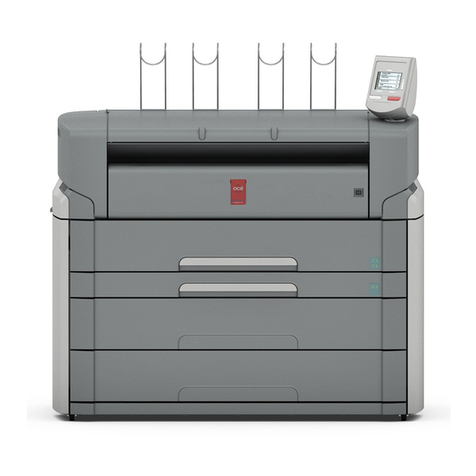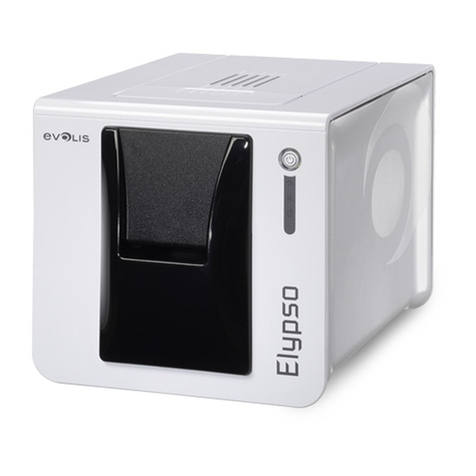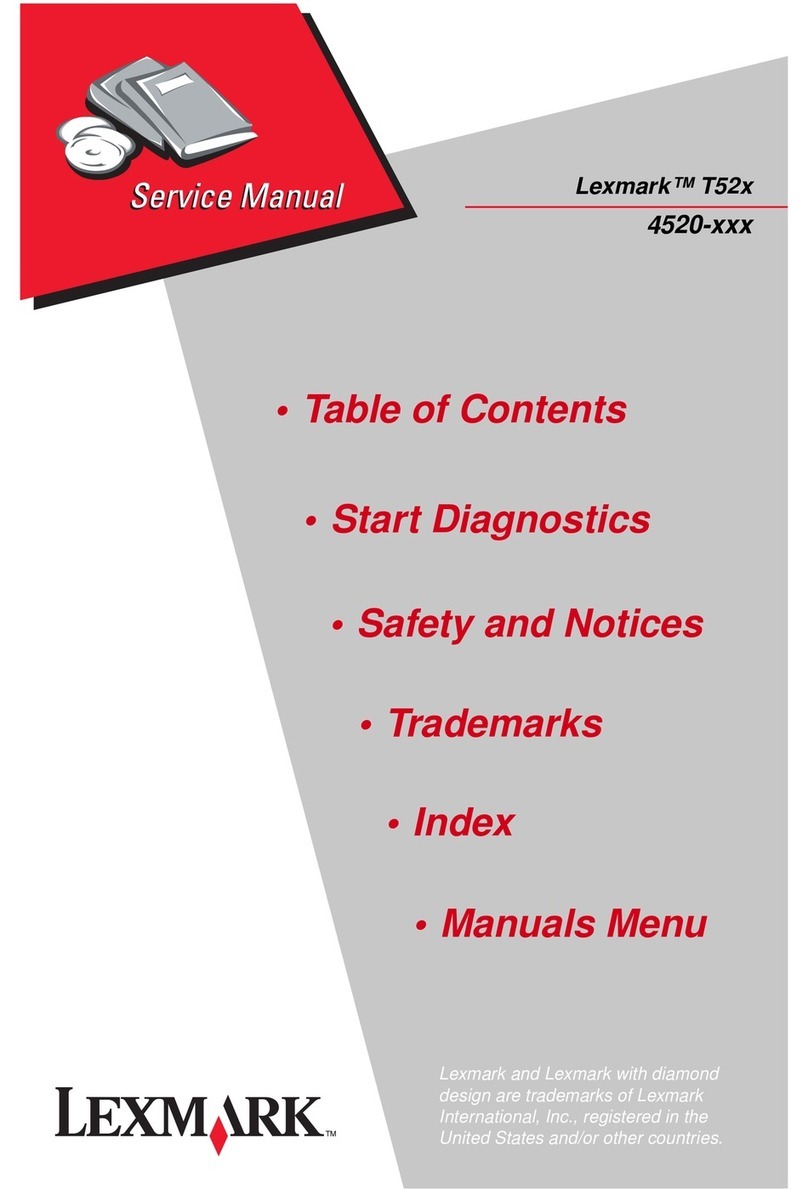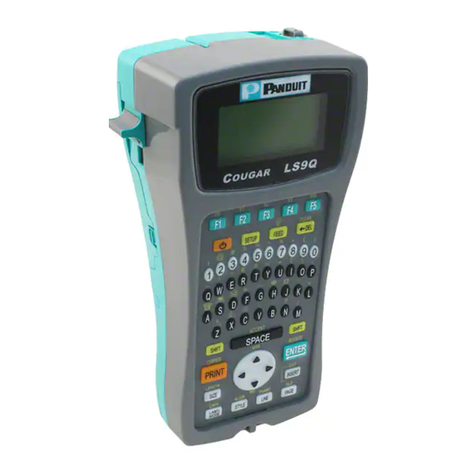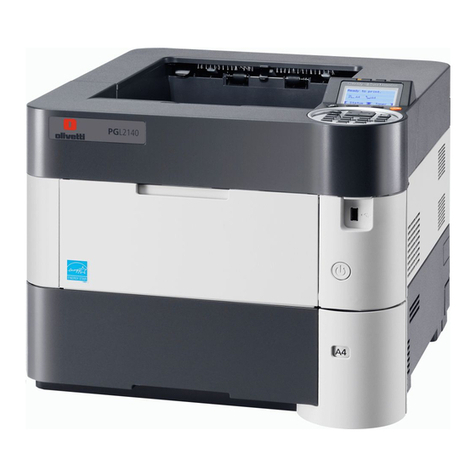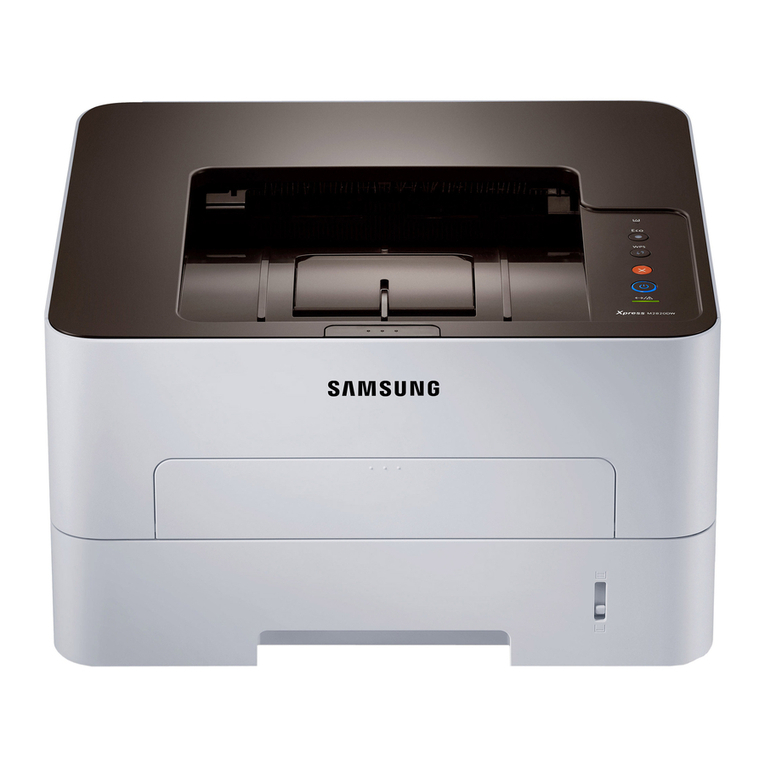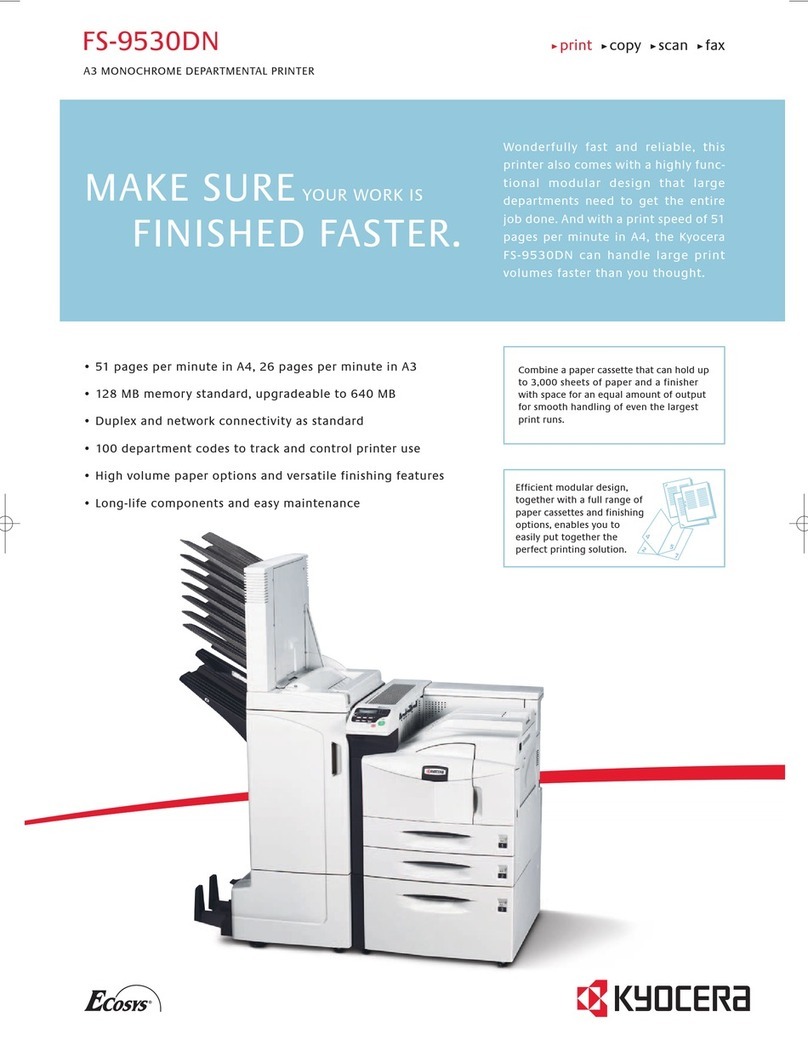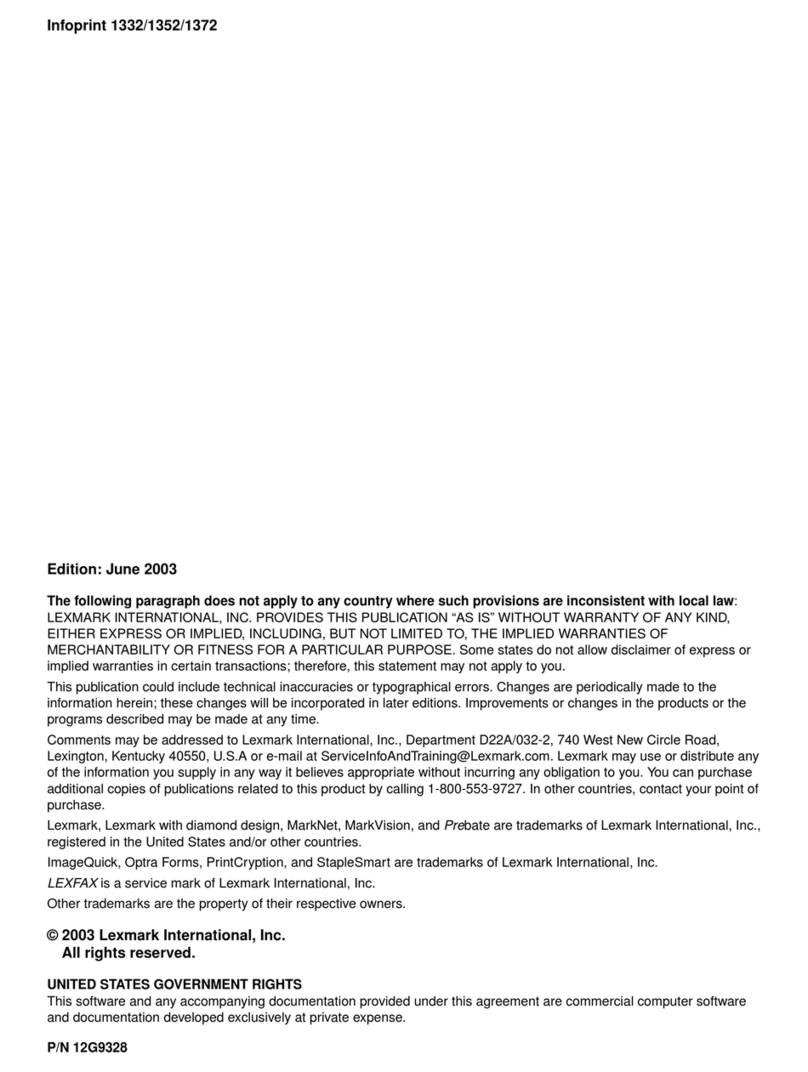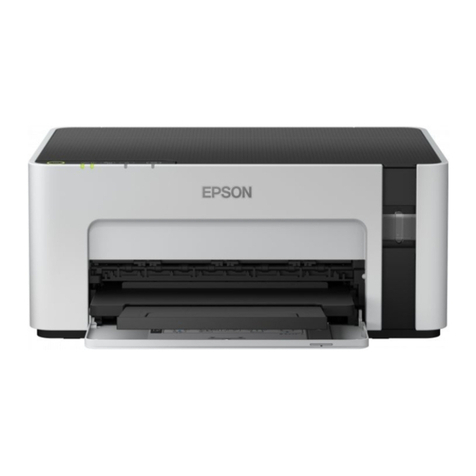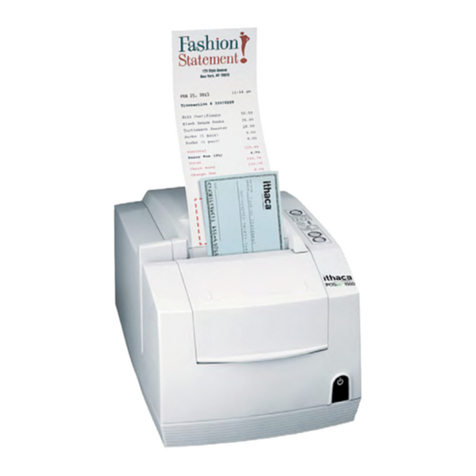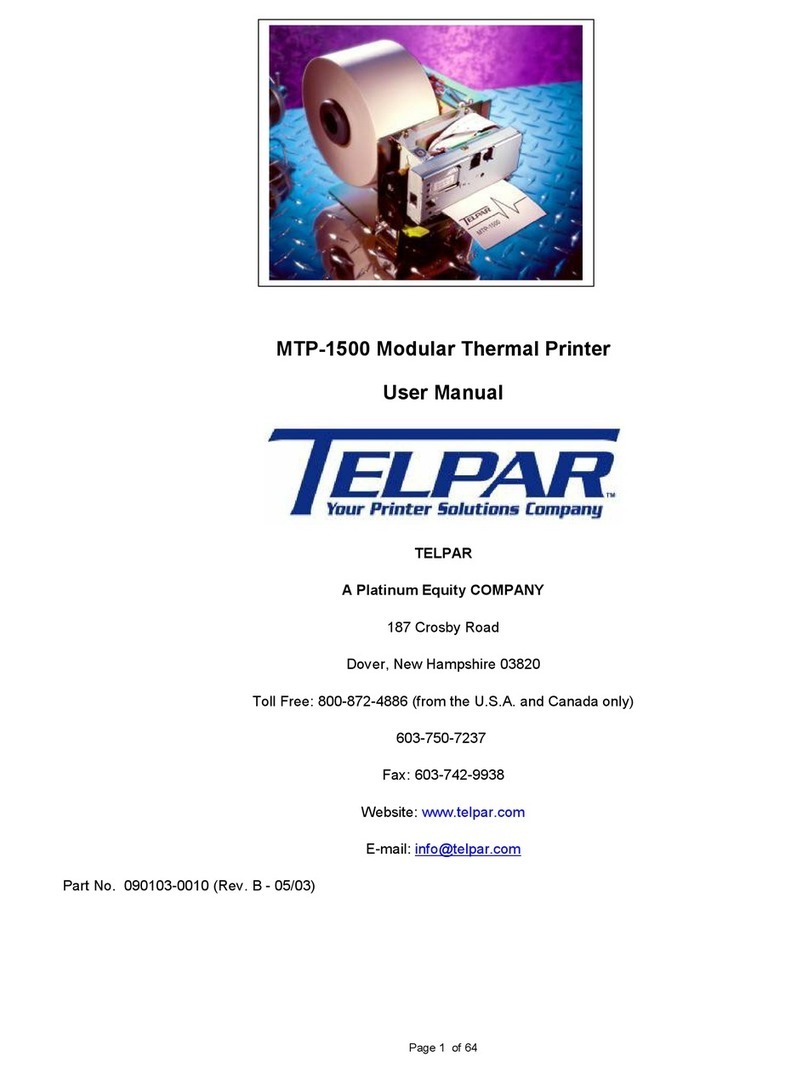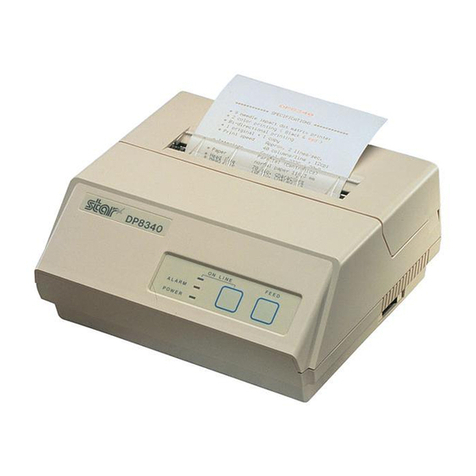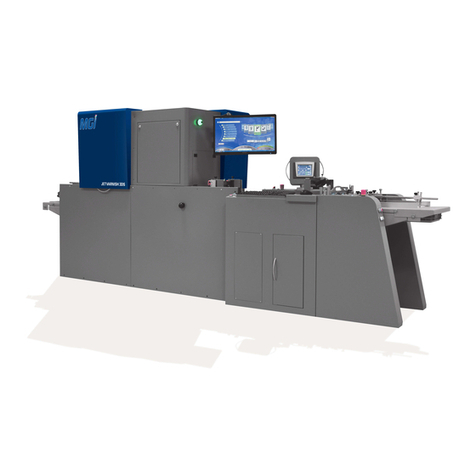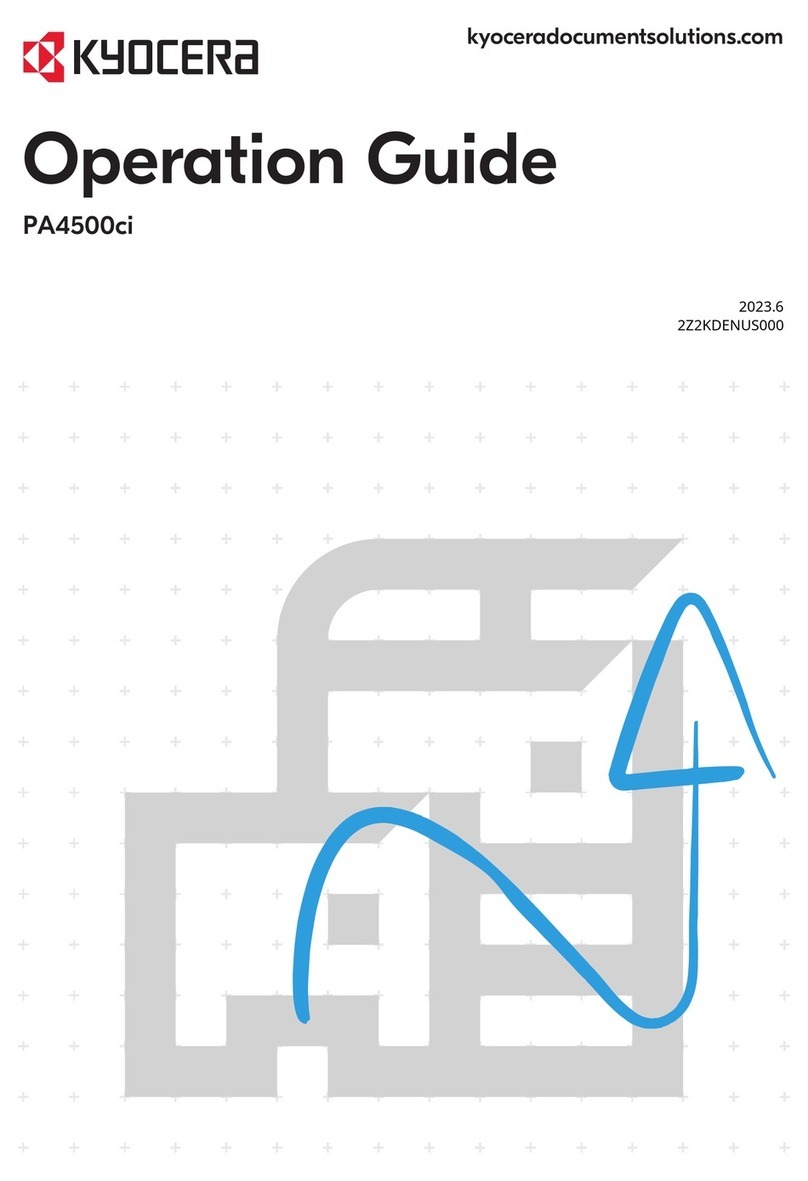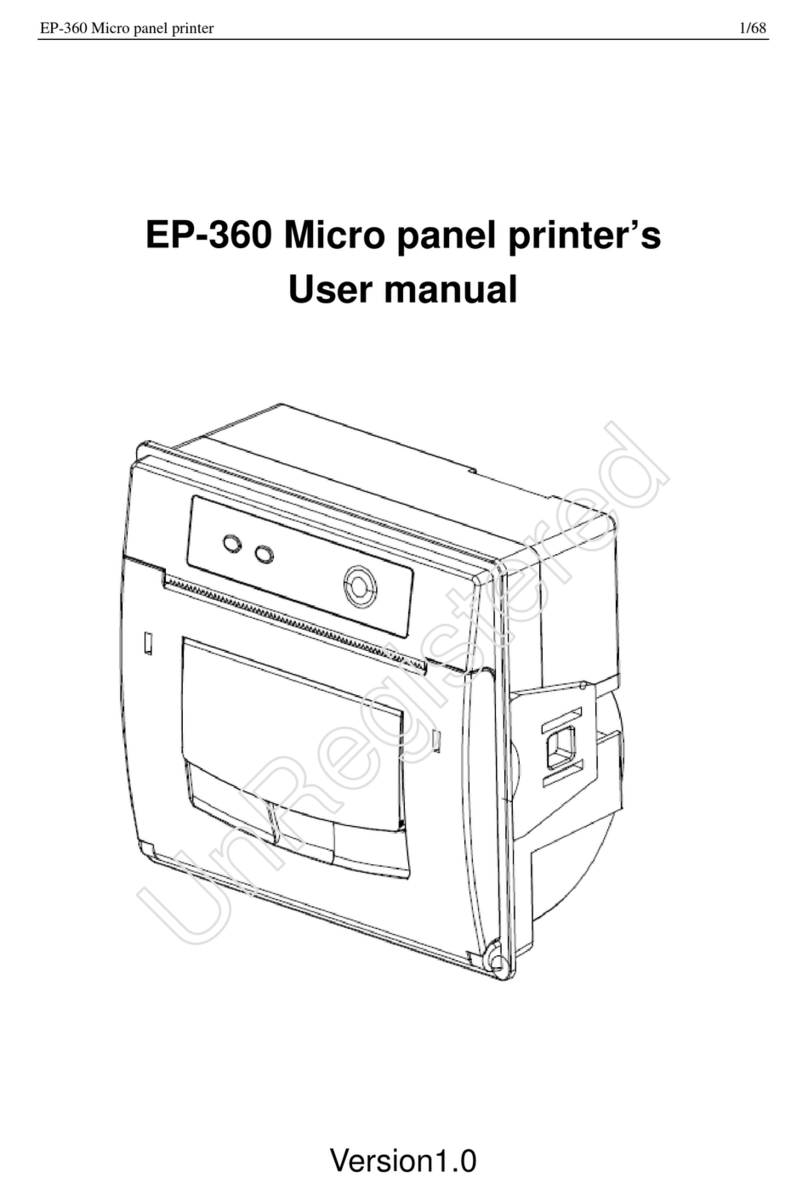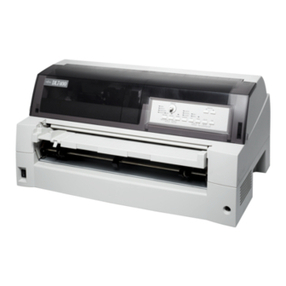User’s Guide Océ CS9160 printer
7 AP-40790 – Rev 2.0 -23/08/2011,
TABLE OF CONTENTS
1Regularisation and safety information............................................................................9
1.1 Compliance with following regulations ..................................................................10
1.2 Warnings, cautions and notes ..............................................................................10
1.3 Managing VOCs ...................................................................................................11
1.4 Handling inks / cleaning + waste of inks / cleaning...............................................12
1.5 Warning labels......................................................................................................15
2Product overview .........................................................................................................19
2.1 Features ...............................................................................................................20
2.2 Name of the parts and functions...........................................................................21
2.3 Printer mode .........................................................................................................26
3Basics ..........................................................................................................................27
3.1 Installation environment........................................................................................28
3.2 Switching the power ON / OFF .............................................................................31
3.3 Replacing ink cassettes ........................................................................................33
3.4 Disposal of waste fluids. .......................................................................................35
3.5 Transfer and transportation ..................................................................................36
4Handling the printer......................................................................................................41
4.1 Making the printer ready-to-print...........................................................................43
4.2 General info on usable media...............................................................................44
4.3 Handling and installing Media...............................................................................46
4.4 Test Print ..............................................................................................................63
4.5 Adjust print............................................................................................................68
4.6 Menu setup on the operation panel ......................................................................71
4.7 Panel Setup menu ................................................................................................73
4.8 Operating from the operation panel ......................................................................92
5Periodical Maintenance................................................................................................97
5.1 Done by end user .................................................................................................98
5.2 Done by Authorized Océ Technician ..................................................................113
6Troubleshooting .........................................................................................................115
6.1 When you cannot generate graphics in the way you want..................................116
6.2 When media is jammed ......................................................................................120
6.3 Malfunctions and failures ....................................................................................122
6.4 Error messages ..................................................................................................128
